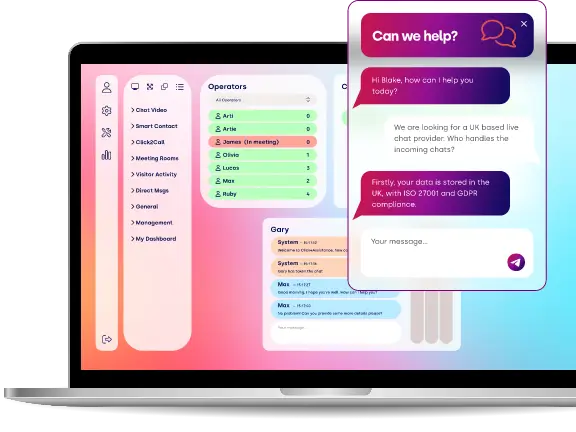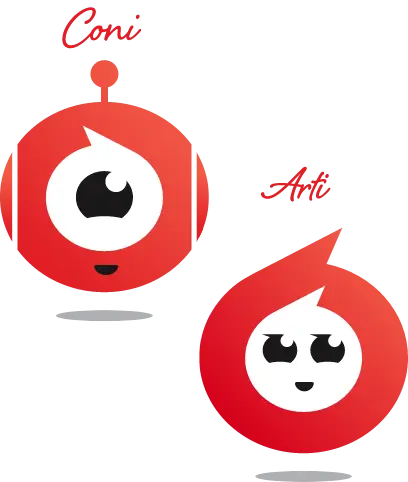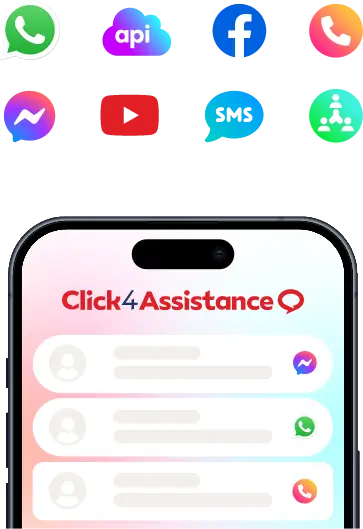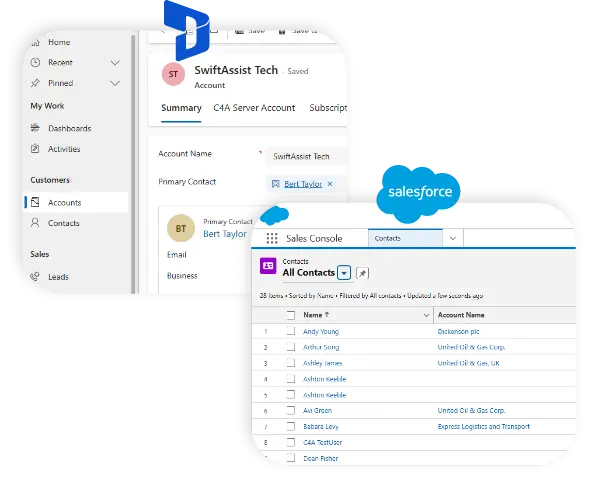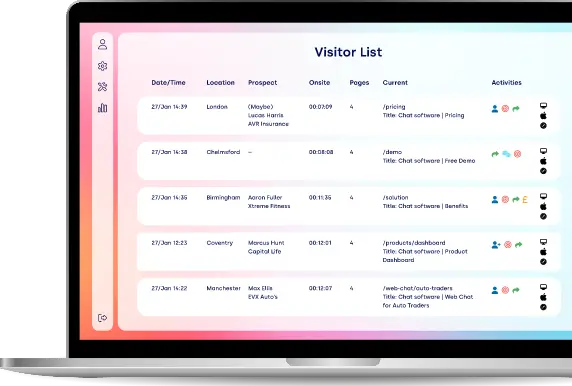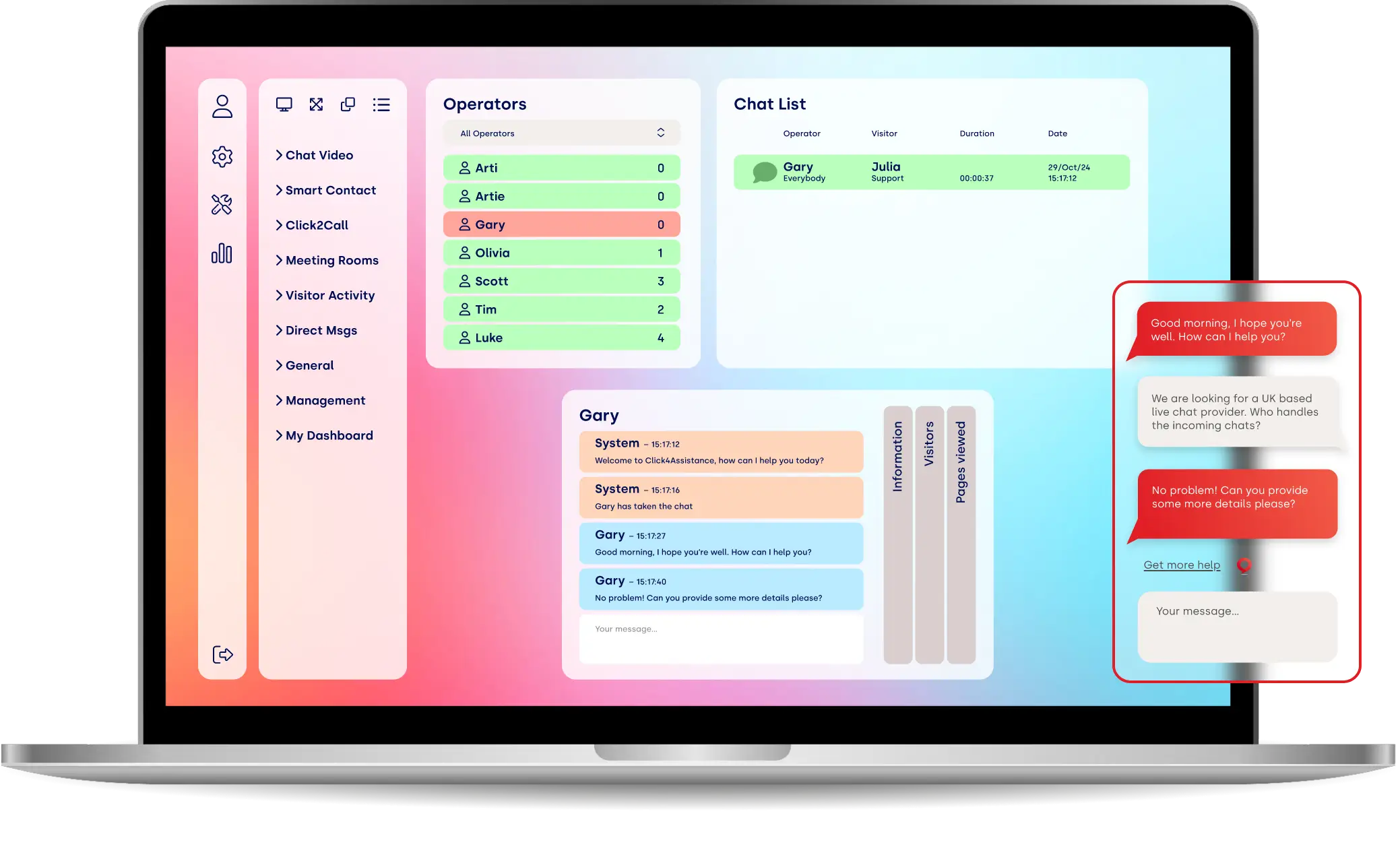11 Tips for Generating ChatGPT Prompts

Boost productivity with 11 expert tips to craft better ChatGPT prompts. Unlock the full potential of SaaS live chat for your business today!
AI is no longer a novelty in business—it's a necessity. From automating customer interactions to drafting content, tools like ChatGPT are reshaping how companies operate. In fact, AI is estimated to contribute up to $15.7 trillion to the global economy by 2030, with productivity improvements driving initial GDP gains as firms augment their labour force with AI technologies.
However, the value businesses get from ChatGPT depends largely on the prompts they use. A well-crafted prompt can mean the difference between a vague, unhelpful response and one that drives real results. Whether it's creating blog posts, responding to customer FAQs, or brainstorming new products, getting the prompt right can unlock new levels of productivity.
For businesses relying on live chat services or SaaS live chat, this can translate into better automated responses and a smoother customer journey, ultimately enhancing customer satisfaction and driving conversions.
This article breaks down 11 practical tips to help you craft better ChatGPT prompts, ensuring your AI assistant works smarter and delivers value where it matters most.
Tip 1: Be Specific and Clear
Specificity drives better results when using ChatGPT. The more precise the prompt, the more targeted and valuable the output.
For example, asking ChatGPT to “write an email about a product launch” will generate something generic. But prompting it with “draft a 200-word email announcing the launch of our new ergonomic office chair, highlighting its adjustable design and health benefits for remote workers” yields a far more tailored response.
In a business context, this level of clarity can save time across various tasks. Whether crafting website copy, outlining marketing campaigns, or scripting automated chatbot responses, well-defined prompts lead to faster, higher-quality results.
For live chat services for business, clear prompts can help generate FAQs or pre-written responses that align closely with customer expectations.
When drafting prompts, think about the:
- Who,
- What,
- Where,
- Why.
Give ChatGPT enough context to understand the end goal. The more detail you provide, the less time you’ll spend editing or reworking the final product.
Tip 2: Provide Context
Context transforms how ChatGPT interprets and responds to prompts. When you supply background information, ChatGPT delivers results that are more aligned with your needs and the tone you want to convey.
Consider the difference between “write a welcome message” and “write a friendly, 50-word welcome message for an e-commerce site that sells handmade jewellery, focusing on craftsmanship and customisation.” The second prompt provides enough context to shape the response, ensuring the message fits the brand's identity and audience.
This level of detail results in a message that feels tailored to the customer’s experience, reducing the need for follow-ups.
Tip 3: Use Step-by-Step Requests
Breaking tasks into steps improves the quality of ChatGPT’s responses. When asked to complete broad or complex tasks in one go, the results can feel overwhelming or incomplete. By dividing the process into stages, as recommended by OpenAI, you guide the AI towards more structured, usable outputs.
For instance, instead of asking ChatGPT to “write a full marketing plan,” try starting with “outline five key components of a marketing plan for a tech startup.” Once you have the outline, follow up with prompts asking for more detail on each section.
This step-by-step approach works particularly well for businesses that use live chat services.
For example, when creating automated chatbot flows, prompt ChatGPT to “list common customer queries for an online electronics store” before moving on to “draft chatbot responses for questions about delivery times and returns.”
By breaking down prompts, you gain more control over the output, refining the results as you go.
Tip 4: Experiment with Tone and Style
ChatGPT can adapt its tone and style based on how you frame the prompt. By specifying the voice you want, you ensure the output aligns with your brand’s personality and the audience you’re addressing.
For example, asking for “a product description for a fitness app” might yield a dry, straightforward result. Instead, try “write a fun, engaging product description for a fitness app aimed at young professionals, highlighting convenience and personalisation.”
For SaaS live chat platforms, tone plays a critical role in customer interactions. A prompt like “draft a chatbot response to greet new users” can be refined to “draft a friendly, conversational chatbot greeting for first-time visitors to an online furniture store.” The result feels warmer and more inviting, enhancing the user experience and reinforcing the brand's voice.
Experimenting with tone allows businesses to create content that resonates more effectively with different customer segments.
Tip 5: Focus on Audience Needs
Understanding the audience is key to generating effective ChatGPT prompts. The AI’s responses improve when prompts reflect the customer’s perspective and address their specific questions or concerns.
For live chat platforms, crafting chatbot scripts with audience needs in mind ensures smoother interactions. A prompt like “create a chatbot response for delivery questions” can be refined to “write a chatbot response for customers asking about delayed deliveries during peak seasons.” This small adjustment makes the response feel more empathetic and relevant to the user’s situation.
By prioritising audience needs, businesses build trust and engagement through their content. Tailoring prompts to the end user’s experience creates more meaningful and effective communication.
Tip 6: Test and Refine
Generating the best results with ChatGPT often requires trial and error. The first response might not always hit the mark, but refining the prompt can lead to significant improvements.
This process is valuable for live chat services. If a chatbot’s initial responses seem too formal or generic, revising the prompts can create a friendlier, more engaging tone. For instance, instead of “respond to questions about returns,” try “create a casual, helpful chatbot response explaining the returns process for online clothing orders.”
Testing and refining prompts allows you to develop content that resonates more effectively with your audience. By revisiting and adjusting the wording, companies can ensure ChatGPT consistently produces high-quality results that align with brand goals and customer expectations.
Tip 7: Include Examples and References
Adding examples to prompts helps ChatGPT deliver more precise and relevant responses. Without them, the AI may generate answers that lack structure or miss the intended focus. Examples act as guides, shaping the output to better fit your expectations.
For instance, asking ChatGPT to “write a case study for a tech company” might produce something too broad. Instead, try “write a case study about a tech company that increased sales by 30% after adopting live chat services. Include sections on challenges, solutions, and results.” This level of detail anchors the response, ensuring it reflects real-world scenarios.
When crafting chatbot scripts, examples provide consistency. A prompt like “draft a chatbot response for refund requests” becomes clearer with “draft a chatbot response explaining the refund policy, similar to how major retailers outline return processes.” This ensures the AI mirrors established formats, leading to smoother customer interactions.
Examples streamline the process and reduce the need for revisions. By showing ChatGPT exactly what you need, businesses can generate polished content more efficiently, enhancing everything from live chat scripts to marketing materials. The result is content that feels intentional, accurate, and aligned with customer expectations.
Tip 8: Use Open-Ended and Closed Prompts Strategically
Knowing when to use open-ended or closed prompts can shape the quality of ChatGPT’s responses. Open-ended prompts encourage broader, creative answers, while closed prompts lead to concise, direct results. Using the right type of prompt for the task ensures more useful outputs.
For example, asking ChatGPT to “list ways to improve customer service” results in a variety of ideas. In comparison, “list five ways live chat services improve customer satisfaction” narrows the scope, delivering focused suggestions. Both approaches have value depending on whether you’re brainstorming or looking for specific solutions.
When designing chatbot interactions, this strategy keeps conversations flowing naturally. An open-ended prompt like “ask the customer how we can help” invites dialogue, while “ask the customer if they need help with returns, shipping, or product details” guides the user toward predefined options.
By understanding how to use each type of prompt, businesses can maximise ChatGPT’s flexibility. This helps refine chatbot scripts, marketing content, and internal communications, ensuring that responses fit the desired outcome and meet audience needs more effectively.
Tip 9: Leverage Templates and Frameworks
Using templates and frameworks when prompting ChatGPT creates consistency and saves time. By providing a structured format, you guide the AI to produce responses that fit seamlessly into existing workflows, reducing the need for heavy edits.
Instead of asking ChatGPT to “write a press release,” try using the following structure:
- Headline,
- Introduction,
- Key details,
- Quotes,
- Call to action.”
This prompt ensures the AI delivers a result that aligns with professional standards. Over time, reusing templates for emails, social posts, or chatbot scripts streamlines content creation and maintains a uniform voice.
For businesses using live chat services, frameworks simplify chatbot development. A prompt like “write a chatbot response for order tracking” becomes more effective with “draft a chatbot response for order tracking in this format:
- Greeting,
- Ask for order number,
- Provide estimated delivery date,
- Offer further assistance.”
This structure creates smoother interactions and ensures all necessary details are covered.
Templates boost efficiency across departments, from marketing to customer service. By embedding clear frameworks into prompts, businesses can scale their content efforts while keeping quality and consistency at the forefront. This approach turns ChatGPT into a reliable asset for generating polished, ready-to-use material.
Tip 10: Incorporate Business Data and Metrics
Adding data and metrics to prompts helps ChatGPT generate more tailored and impactful responses. By grounding the AI’s output in real figures or specific business insights, the results become more relevant and actionable. Without data, responses can feel too generic, missing the opportunity to align with key performance indicators or industry trends.
For example, asking ChatGPT to “write a sales report summary” may produce broad suggestions. A more refined prompt like “write a 200-word summary of Q3 sales performance, highlighting a 15% increase in online orders and a 10% growth in live chat service engagement” ensures the output reflects actual business outcomes. This makes the content more precise and valuable.
When applied to SaaS live chat platforms, incorporating metrics into chatbot prompts can enhance user interactions. A prompt such as “draft a chatbot message about delivery times” becomes stronger with “draft a chatbot response explaining that 95% of orders are delivered within 48 hours.” The added detail builds trust and reassures customers.
By weaving in data, businesses can produce more accurate and persuasive content across various formats. Whether writing reports, crafting marketing materials, or optimising chatbot interactions, integrating metrics into prompts helps drive clearer communication and more impactful messaging.
Tip 11: Balance Creativity with Practicality
While creativity can make ChatGPT responses more engaging, grounding prompts in practical goals ensures the output remains useful. Striking the right balance allows businesses to generate ideas that are both innovative and actionable. Overly creative prompts without clear direction can lead to results that, while interesting, lack relevance.
For example, asking ChatGPT to “brainstorm fun marketing ideas” may yield playful but impractical suggestions. Refining the prompt to “brainstorm 3 creative but low-cost marketing ideas for a small online retailer launching a new product” keeps the focus on feasibility.
In the context of live chat, blending creativity with practicality can enhance chatbot interactions. A prompt like “create a chatbot script for welcoming users” might produce a quirky response. By specifying “draft a chatbot welcome message that is friendly but professional for a financial services website,” you ensure the result fits the brand’s tone and customer expectations.
Whether developing chatbot scripts, marketing content, or internal documents, this approach drives results that are both imaginative and aligned with strategic goals.
Mastering prompt creation is key to unlocking ChatGPT’s full potential. Clear, detailed prompts lead to sharper, more relevant outputs, saving time and improving efficiency across business operations. Whether it’s crafting marketing content, automating customer support, or generating ideas, better prompts mean better results.
For businesses using live chat services, refining prompts ensures smoother, more engaging customer interactions. By focusing on precision and context, companies can enhance productivity and deliver a more seamless user experience. The right prompts make AI a valuable tool, driving growth and streamlining workflows at every level.
If you want to find out more about how to integrate ChatGPT features into your SaaS live chat, do not hesitate to reach out to our team.
